Deciding how to plan your home's layout can be challenging. Do you want to design a new dining room but don't know whether or not it should be next to the kitchen? Well, we've done some digging and have the answer for you. Let's discuss.
Although your dining room doesn't technically need to be next to the kitchen, it should be close. Considering that this will make serving food easier, you should plan out a kitchen and dining room either directly next to each other or only a short distance away.
As we begin, we will cover all things dining rooms and discuss how close yours needs to be to your kitchen. Whether you're renovating, building, or just in need of some inspiration, we're here to help. Now let's get right into it!
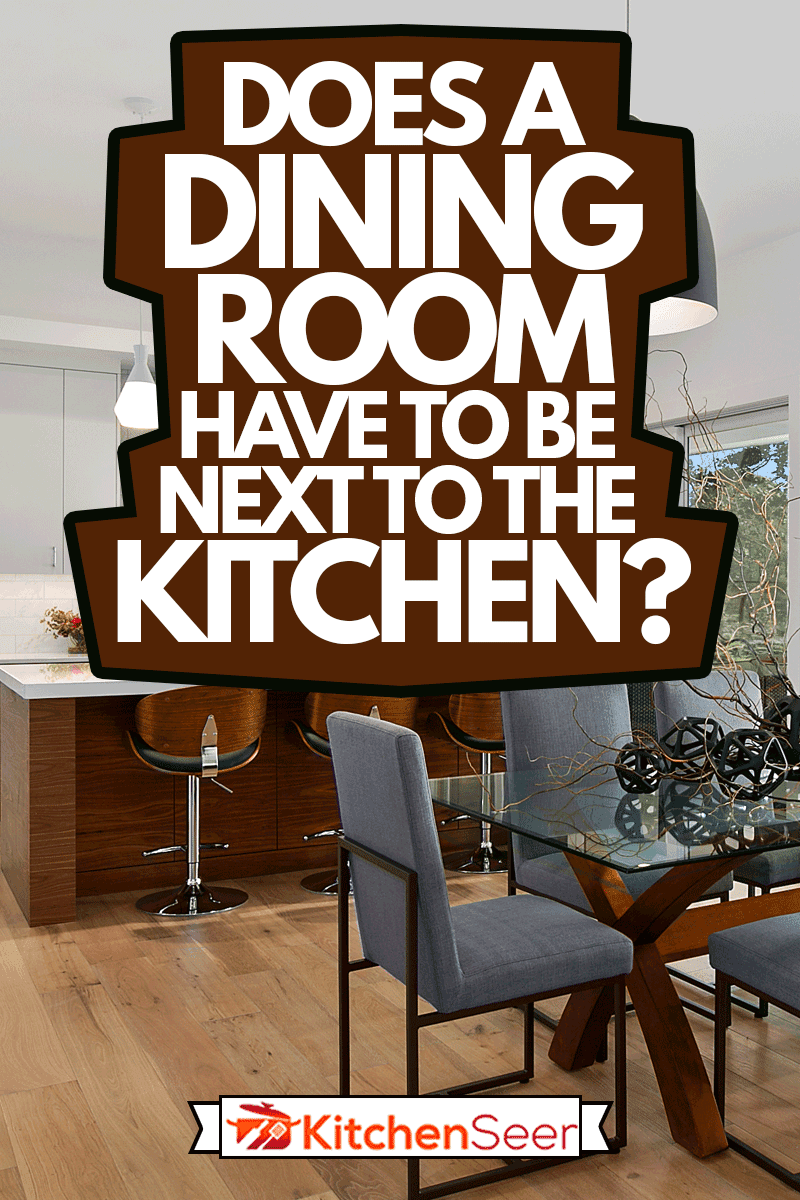
Where Should A Dining Room Be Placed?
Typically, you want to place your dining room adjacent to the kitchen. Although many people choose to combine the two or skip a dining room altogether, it's traditionally a better idea to give this area its own designated location.
You will often see a dining room somewhere with big, bright windows, so if you are planning one, ensure it gets plenty of sunlight.

What Is A Good Dining Room Size?
Your dining room should be around 14 x 16 feet or close to 224 square feet. Of course, this isn't required, but it will leave enough room for a standard-sized table and chairs to go around it.
If you prefer a more spaced-out dining room, even going up to 14 x 18 feet will add about 28 square feet to your design, which makes a difference. Again, this is up to you and how big of a dining room you need, but it's always better to have extra space than not enough.
How Close Should A Dining Room Be To The Kitchen?
Ideally, you want to keep your dining room directly next to or across from the kitchen. As we said, it's best to keep the two close for food serving/accessibility purposes, so the closer, the better.
Having your dining room be too far from your kitchen can make serving and cleaning up meals inconvenient and confusing for guests, which you want to avoid. A good rule is to keep the two spaces within a few steps of each other or at least in a similar area of your home.
How Do You Arrange A Dining Area?
Regardless of size, you want to keep your dining area accessible. An easy way to do this would be centering your table so that people can easily move around it.
You also want to make sure your dining area is its own entity, meaning there isn't furniture right next to it. Even in smaller spaces, you want to keep your dining area somewhere bright and secluded, like a nook or nearby window/patio.
Dining Room Arrangement Idea
Here is a perfect example of how to use a smaller dining space to your best advantage. In this design, the table is centered and placed near plenty of natural light.
How Much Clearance Do You Need Around A Dining Table?
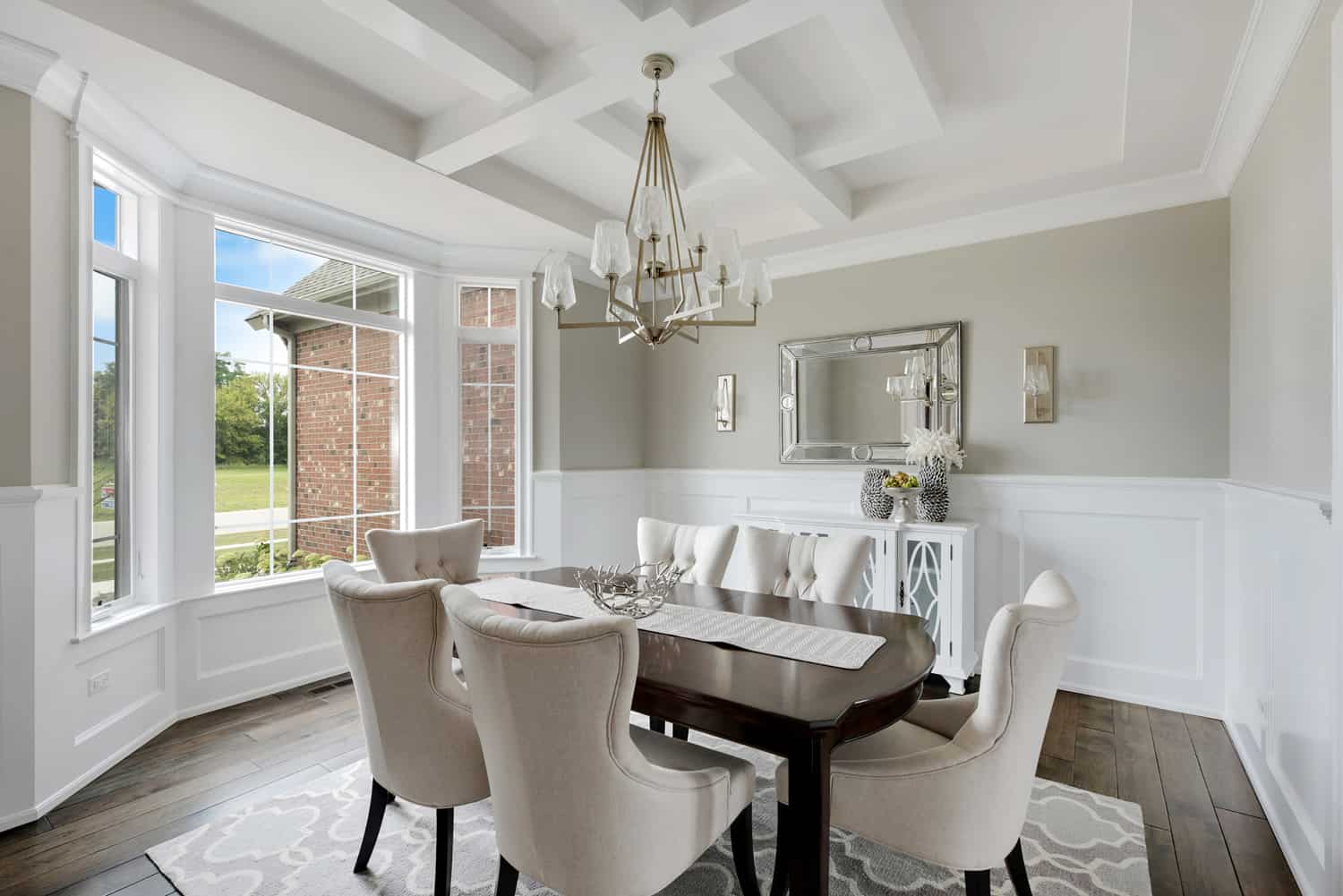
Ideally, you want to have at least 30 inches of clearance between your dining table's edge and the walls/anything nearby. This will create enough space for you to walk around and comfortably sit down at your table without feeling constricted.
That said, 30 inches of clearance might not be enough for everyone, so if you want plenty of space, we recommend closer to 35 or 40 inches.
How Big Should A Dining Table Be?
Although this depends on how many people plan to use it, your dining table should be at least 36 inches across. Here are some things to do:
- Measure the length and width of your dining area.
- Subtract six feet from the length + width to allow three feet of clearance on all sides.
- Your answer is the maximum recommended size for your dining table.
One thing to note—it's better not to choose the biggest table your space can fit but rather one that seats everyone and matches your style.
Can A Dining Room Be At The Front Of The House?
Generally, you want to keep your dining room towards the middle of your house. Most times, the living room will be at the front of your home, while the kitchen and dining room are further back.
Of course, that's not to say you can't put your dining room near your entrance, but it might look confusing. Instead, we recommend creating a breakfast nook towards the front of your house, and then a traditional dining space tucked back near the kitchen.
What Can I Do Instead Of A Traditional Dining Room?
For anyone not wanting to have a traditional dining setup, there are plenty of alternatives. Like we said above, you can try a dining nook towards the front of your house, even making it your full-time table.
Another alternative to a traditional dining room is turning your space into a lounge or cocktail area, where you can still eat but also entertain and make drinks. Even using a small section of your kitchen is a great place to add a dining area without dedicating an entire room to it.
Can My Dining Room Be In The Kitchen?
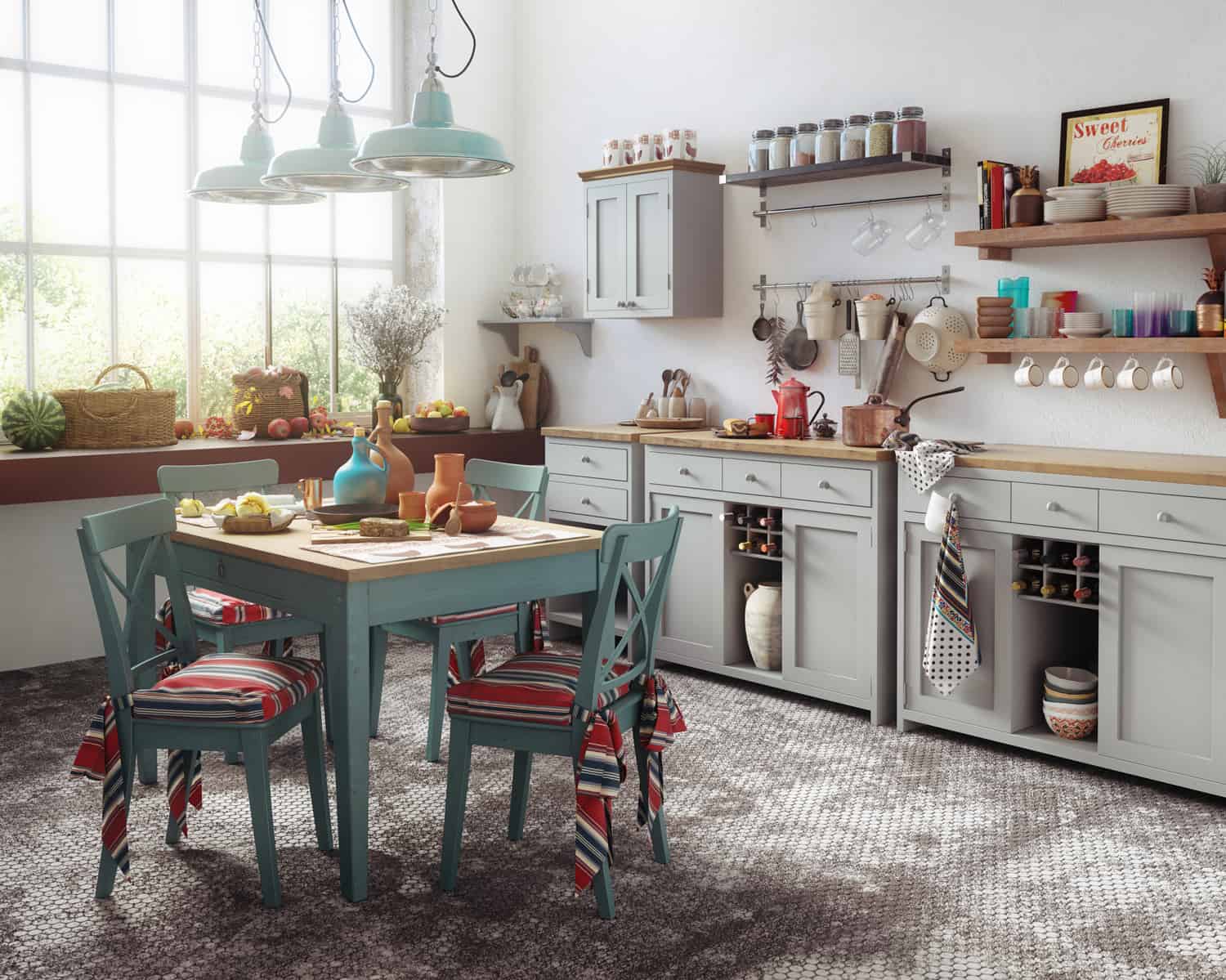
Yes, you can certainly combine your kitchen and dining room. Especially in apartments, you will see kitchen islands serve as a dining table, so this is very common.
Even if you have a bigger home, adding a dining table to your kitchen can give it an intimate, charming design. Regardless, make sure to find a space in your kitchen that allows enough seating and doesn't feel too tight.
What Is The Minimum Area For A Kitchen With Dining?
Your kitchen should be no smaller than 150-200 square feet if you want to add dining. Even if you only need two small chairs and a table, it's essential to have at least a few feet of clearance on all sides of your dining area.
That said, if you prefer to buy bar stools and eat at your island, there isn't a specific minimum area you need to follow, so you can get creative. Of course, it's not the same as an actual dining table and chairs, but if you need the extra space, we think it's a great alternative.
3-Piece Compact Dining Set
This dining set comes with a table and two chairs, works in smaller spaces, has a bistro design, and comes in various colors.
Follow this link to view it on Amazon.
Adjustable Swivel Bar Stools
These two barstools have a chrome finish, adjust from 24-30 inches, are suitable for kitchen counters/islands, and come in a few colors.
Check out these bar stools on Amazon.
Do I Need A Dining Room?
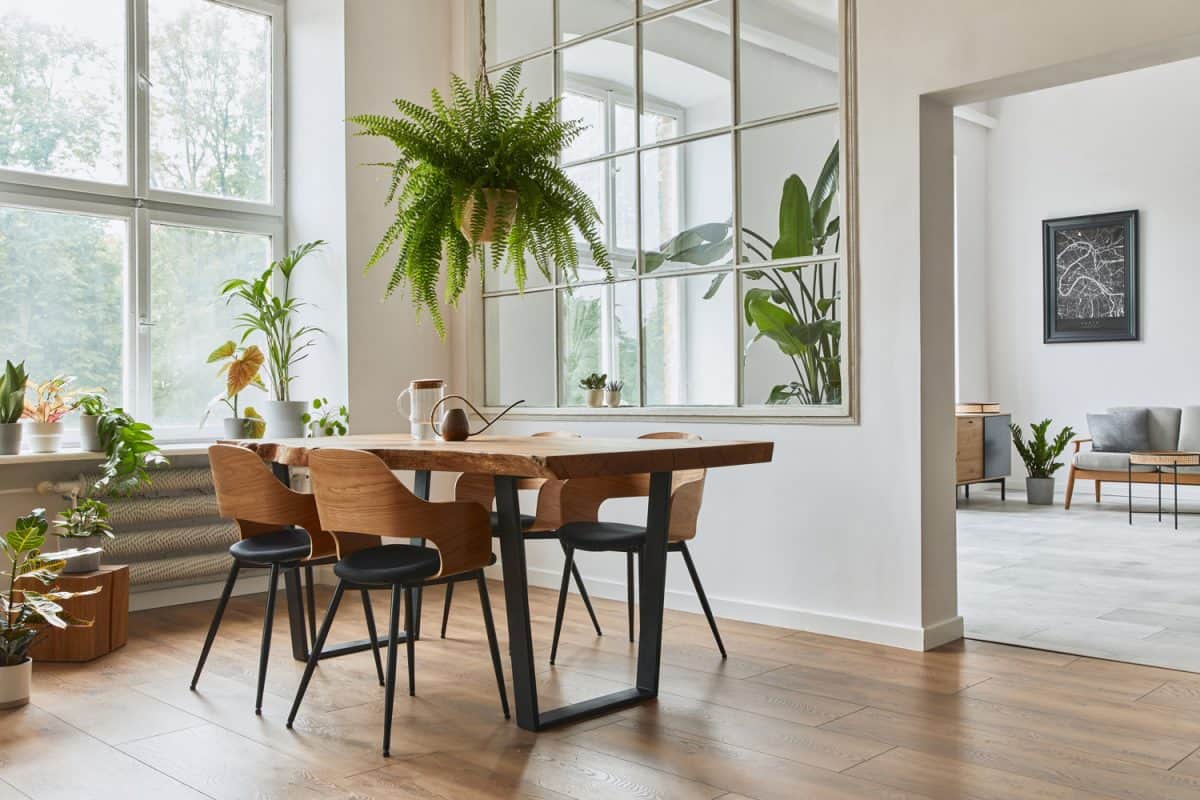
You don't necessarily "need" a dining room. Although having one can be a great selling point for your home, if a dining room isn't for you, that's completely fine.
With that said, it is a good idea to designate a room in your home that could be staged as a dining room if you ever sell, but again, this is your choice. Like we covered, your kitchen can also be a dining space if you prefer that, so you've got options.
Does Having A Dining Room Add Value To A Home?
Having a dining room will usually add some value to your home. Although there isn't an exact number, including a dining space in your house will be a selling point for many homebuyers.
Like having an extra bedroom or bathroom, it's better to have a dining room than not. The more spaces a home has for entertainment, the better, which includes dining.
To Wrap Things Up
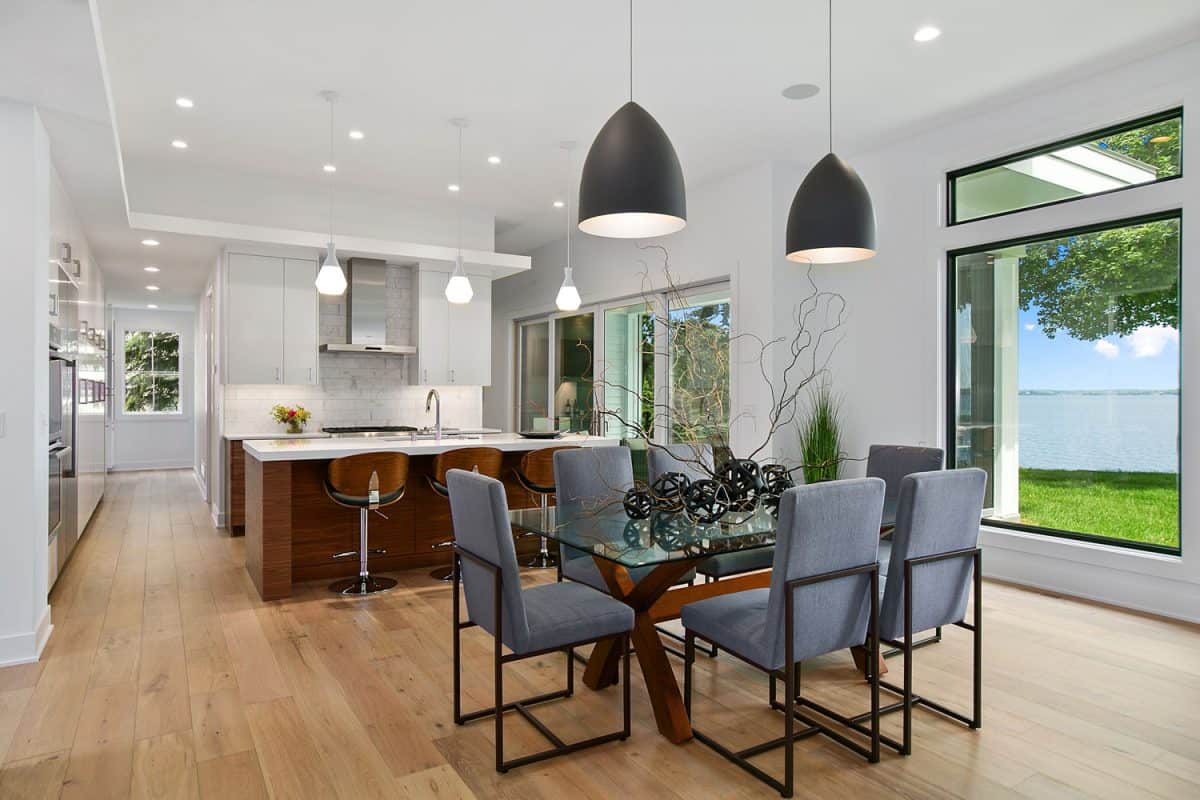
Whether you're planning your dream home or figuring out your current one, it's essential to choose a good layout. A dining room should be next to the kitchen, or at least close by.
When designing your dining room, try to keep your table big enough to fit everyone, but not so big it takes over the whole space. For smaller homes/apartments, we recommend combing your kitchen and dining room by utilizing your island or purchasing a smaller bistro-style dining set.
Regardless, make sure to keep your dining room and kitchen close, and don't be afraid to combine the two if needed.
Before you go, be sure to check out these helpful related posts below!
Should The Dining Table Match The Kitchen Cabinets?
Curtains VS Blinds For The Kitchen - Which To Choose?
What Paint Finish Is Best For Kitchen Ceiling? [3 Suggestions]



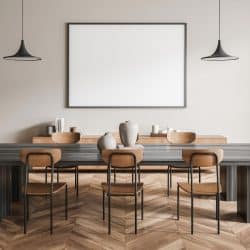


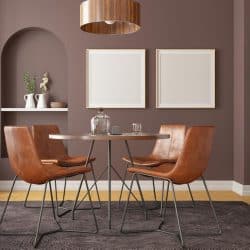

![new home ornate dining table - How To Decorate A Dining Table When Not In Use [11 Ideas]](https://kitchenseer.com/wp-content/uploads/2022/02/new-home-ornate-dining-table-1-250x250.jpg)